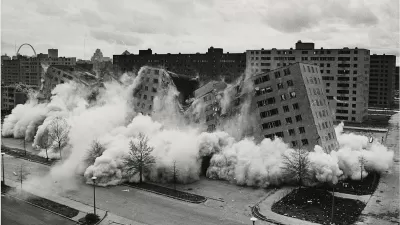With a lack of suitable rental units and a lack of willing landlords, the city of Pittsburgh provides a case study for the failure of the Housing Choice Voucher Program to live up to its potential.
"It can take years to get a Section 8 voucher in Pittsburgh. But it takes just four months to lose it," according to an article by Kate Giammarise. The threat of losing a voucher refers to the 120-day time limit for finding a qualifying residence once a recipient has received a voucher. The time limit is especially problematic due to a shortage of units and a lack of landlords willing to accept subsidized rent.
Under the Housing Choice Voucher Program, or Section 8, as it's commonly known, "[a] family that receives a voucher must find a rental unit that meets a minimum standard and can pass a quality inspection. A subsidy is then paid by the housing authority administering the program directly to the landlord; the family pays the difference between the actual rent and the subsidy."
The key problem examines in the article is the willingness of landlords to accept vouchers, which often forces program recipients to lose their vouchers. Vouchers expire frequently enough that the Neighborhood Legal Services Association employs families who have lost vouchers.
More evidence of the vouchers' failure to live up to the promises of the program: the amount of money spent by the city compared to the amount of money the city receives for the program. "In 2013, the Housing Authority of the City of Pittsburgh received $41.9 million in voucher funding from the federal government but spent only $29.8 million of that on voucher payments," reports Giammarise. In 2014, "$13 million of the Housing Authority of the City of Pittsburgh’s $43.2 million voucher allocation didn’t go to vouchers." The article details how that remaining money was used, and also cites a number of experts who describe possible steps for improving the program in the city of Pittsburgh.
FULL STORY: For those with Section 8 vouchers, finding suitable housing difficult

Planetizen Federal Action Tracker
A weekly monitor of how Trump’s orders and actions are impacting planners and planning in America.

San Francisco's School District Spent $105M To Build Affordable Housing for Teachers — And That's Just the Beginning
SFUSD joins a growing list of school districts using their land holdings to address housing affordability challenges faced by their own employees.

The Tiny, Adorable $7,000 Car Turning Japan Onto EVs
The single seat Mibot charges from a regular plug as quickly as an iPad, and is about half the price of an average EV.

With Protected Lanes, 460% More People Commute by Bike
For those needing more ammo, more data proving what we already knew is here.

In More Metros Than You’d Think, Suburbs are Now More Expensive Than the City
If you're moving to the burbs to save on square footage, data shows you should think again.

The States Losing Rural Delivery Rooms at an Alarming Pace
In some states, as few as 9% of rural hospitals still deliver babies. As a result, rising pre-term births, no adequate pre-term care and "harrowing" close calls are a growing reality.
Urban Design for Planners 1: Software Tools
This six-course series explores essential urban design concepts using open source software and equips planners with the tools they need to participate fully in the urban design process.
Planning for Universal Design
Learn the tools for implementing Universal Design in planning regulations.
Smith Gee Studio
City of Charlotte
City of Camden Redevelopment Agency
City of Astoria
Transportation Research & Education Center (TREC) at Portland State University
US High Speed Rail Association
City of Camden Redevelopment Agency
Municipality of Princeton (NJ)



























